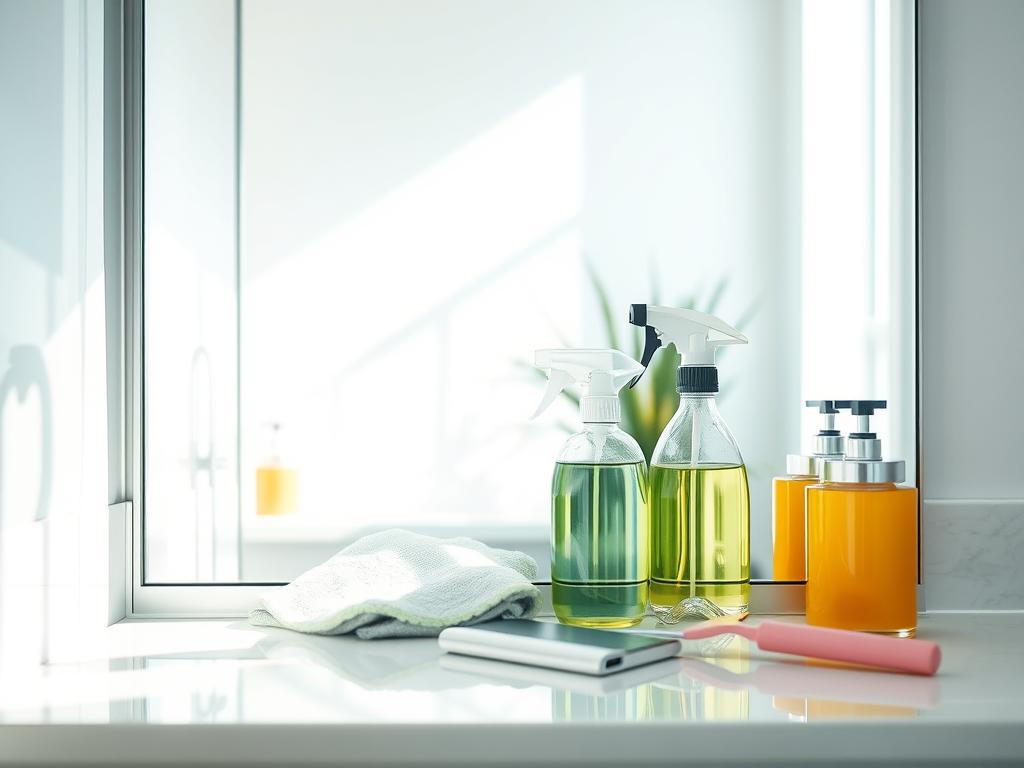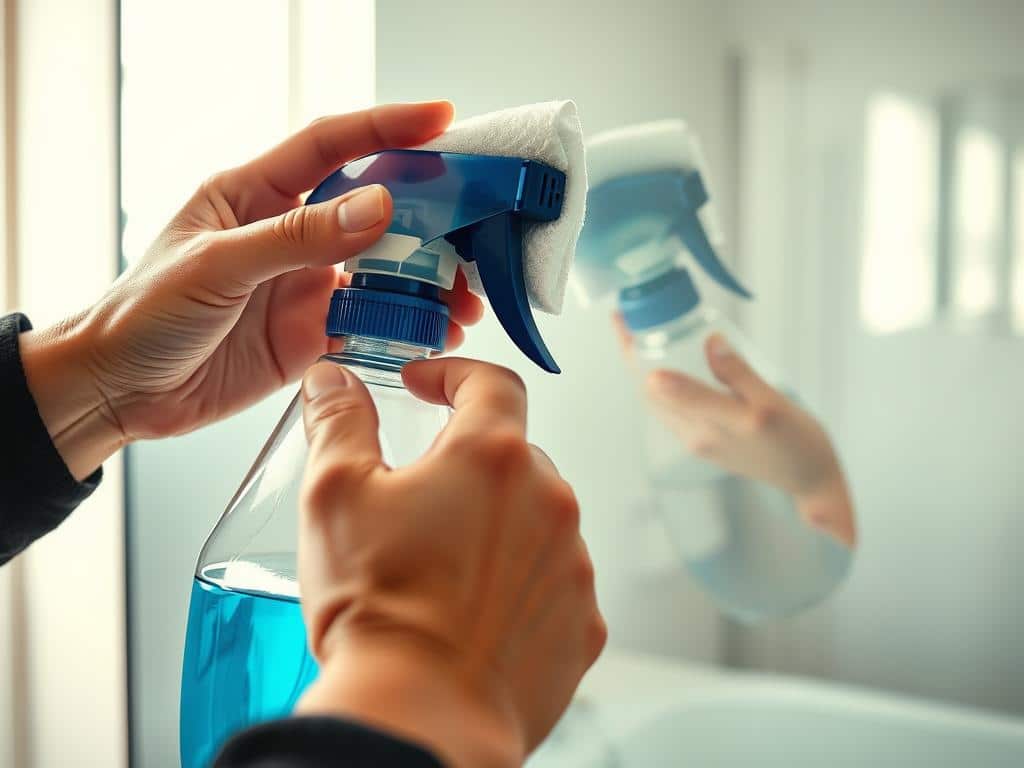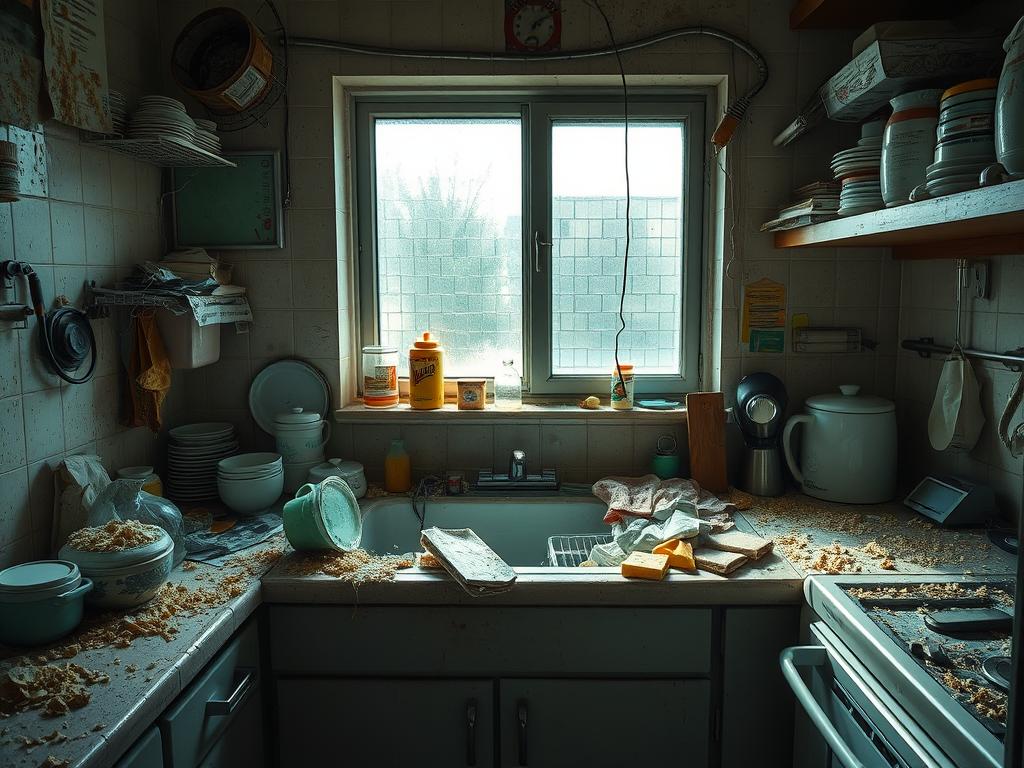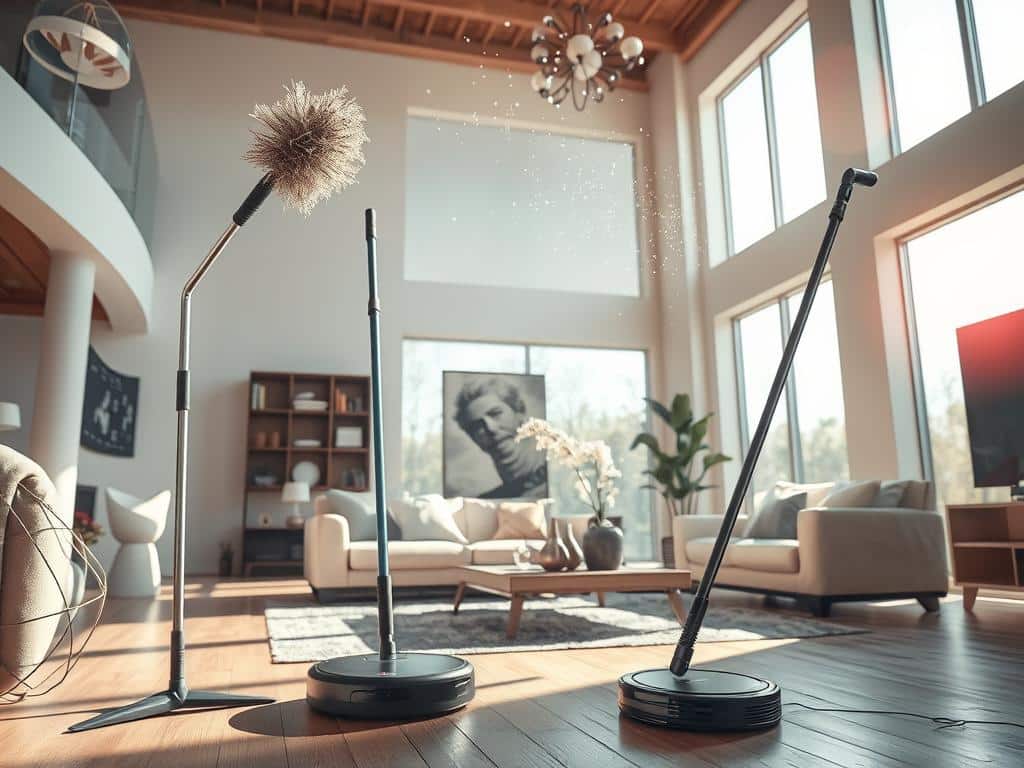
Achieving a spotless mirror can seem like a daunting task, but the right mirror cleaning techniques can make all the difference. Whether you’re sprucing up your bathroom or ensuring your bedroom mirror remains pristine, understanding the proper methods is crucial to avoid streaks. This ultimate guide will share streak-free mirror tips, diving into the best products and practices to ensure your clean glass surfaces shine brilliantly.
Streaks and residue are often caused by additives like soaps, scents, and dyes found in many cleaning products. These substances leave a thin layer behind, marring your mirror’s surface. By using the right products and tools, such as microfiber cloths, you’ll be able to clean your mirrors effectively. Microfiber cloths are designed to absorb or cling to dirt and grime, making them an ideal choice for a streak-free finish.
You’ll also learn why distilled water is recommended for homemade cleaning solutions, especially if you have hard water, which is a common issue affecting many U.S. households. We’ll cover why circular cleaning motions should be avoided, as they can cause static electricity buildup on glass, attracting dust. Instead, adopting side-to-side or top-to-bottom patterns will help you achieve a flawless shine.
This ultimate spotless mirror guide will not only enhance the look of your home but also make your cleaning routine more eco-friendly and effective. Say goodbye to streaks and hello to clear, sparkling mirrors.
Why Mirrors Get Streaky?
Understanding the causes of mirror streaks is essential to maintaining a clear reflection. Several factors contribute to the problem, making it vital to address them for a streak-free clean. This section dives into the common causes and the role of cleaning products to help you avoid mirror cleaning mistakes that lead to glass surface residues.
Common Causes of Streaks
Streaky mirrors often result from improper cleaning agents and tools. Additives in cleaners, such as soaps, scents, and dyes, leave residues that evolve into streaks. Aggressive scrubbing can damage the mirror surface, while incorrect drying techniques exacerbate the problem. Another notable cause is the failure to pre-clean the surface effectively. Removing dust and debris before applying any cleaning solution is crucial to prevent residue buildup.
The Role of Cleaning Products
Choosing appropriate cleaning products significantly impacts the clarity of your mirrors. Many traditional glass cleaners contain ammonia or alcohol, which can create more streaks. Instead, opt for streak-free solutions like those suggested by experts, such as Sprayway, or homemade solutions involving equal parts white vinegar and water. Additionally, using microfiber cloths can enhance your cleaning results by avoiding lint and ensuring thorough absorption of residues. Following these guidelines helps minimize the causes of mirror streaks and maintain a transparent surface.
Choosing the Right Cleaning Solution
Understanding how to choose the best mirror cleaning solutions is crucial in maintaining a streak-free and shiny surface. A popular choice among many is vinegar as a natural cleaner, which offers effective and eco-friendly benefits. When avoiding streaks with proper cleaners, it’s important to use solutions that don’t leave behind residues.
Benefits of Vinegar and Water
Combining vinegar and water is one of the best mirror cleaning solutions due to its natural and non-toxic properties. Vinegar as a natural cleaner has the ability to cut through grime and smudges without the harsh effects of chemical-laden products. This simple mixture not only saves money but also protects the delicate reflective coating on your mirrors, ensuring a clear view.
- Cost-effective and easily available
- Free from harmful chemicals
- Prevents streaks and residue buildup
Avoiding Overly Sudsy Cleaners
While vinegar and water are effective, it is equally important to avoid overly sudsy cleaners that can leave streaks on your mirror surfaces. Sudsy cleaners, often found in commercial products, can create a film that makes it difficult to achieve a streak-free clean. When focusing on avoiding streaks with proper cleaners, opt for solutions specifically designed for mirrors, or use simple homemade mixtures like vinegar and water.
Additionally, to achieve the best results, here are a few tips:
| Cleaning Solutions | Benefits | Drawbacks |
|---|---|---|
| Vinegar and Water | Natural, effective, cost-efficient | Strong smell |
| Commercial Glass Cleaners | Easy to use, readily available | May contain chemicals |
| Homemade Mixes (Ammonia, Alcohol) | Customizable, potent | Requires mixing |
By choosing the right cleaning solution and understanding the benefits of natural cleaners like vinegar, you can avoid streaks and maintain your mirrors’ pristine condition. Consider these tips and product choices to find what works best for your mirror cleaning routine.
How to Clean Mirrors
Cleaning mirrors can be straightforward if you follow essential mirror cleaning steps. Knowing precisely how to clean reflective surfaces ensures a gleaming finish without streaks. Here is a detailed process to help you in achieving spotless mirrors.
Begin by gathering your cleaning supplies. You’ll need a microfiber cloth, a squeegee, white vinegar, distilled water, rubber gloves, and optional ammonia for stronger stains. Microfiber cloths are particularly recommended for cleaning mirrors as they effectively minimize streaks and lint residue.
For most mirrors, mixing equal parts of white vinegar and water works wonders. This solution not only cleans effectively but is also eco-friendly. Simply spray it on the mirror and wipe it off with a microfiber cloth.
If your mirror has tougher stains or residues, consider using a razor scraper at a 45-degree angle to remove them. Alternatively, a baking soda and vinegar paste can be applied to treat hard stains on the mirror. For an extra strong cleaner, mix ½ cup of ammonia with 1 gallon of warm water, but don’t forget to wear protective gear like rubber gloves and goggles.
Here’s a breakdown of recommended mirror cleaning agents and their uses:
| Cleaning Agent | Usage |
|---|---|
| Vinegar and Water | For regular cleaning and streak-free finish |
| Ammonia Solution | For tackling tough stains |
| Rubbing Alcohol | Pretreatment for stubborn marks |
| Baking Soda and Vinegar Paste | Spot cleaning hard stains |
Ensuring you follow these mirror cleaning steps and use the right tools can make a significant difference in achieving spotless mirrors. Learning how to clean reflective surfaces properly will save you time and effort, leaving your mirrors sparkling clean.
Pre-Cleaning Your Mirror Surface
Properly pre-cleaning glass surfaces is essential to achieve a flawless, streak-free shine. The first step in effective mirror cleaning is spot cleaning tough stains and removing dust. By addressing dirt and grime beforehand, you can ensure that subsequent cleaning steps do not leave behind any streaks or cloudiness.
Spot Cleaning Tough Stains
Mirrors situated in high-traffic areas like bathrooms or over bedroom vanities often accumulate more substantial dirt and grime. For removing tough mirror stains, start by using a solution of two parts warm water and one part distilled white vinegar. Focus on areas with significant build-up, such as hardened gunk or grime. You can also add a drop of organic dish soap for extra cleaning power. A microfiber cloth with a flat weave works best for gently scrubbing these spots without scratching the surface.
The Importance of Removing Dust First
Dusting mirrors is crucial before applying any liquid cleaner. Dust can act like sandpaper on a mirror’s surface, causing scratches if not removed first. Use a microfiber cloth to wipe off dust and loose particles. Unlike paper towels, which can leave behind a dusty-looking residue, or newspaper, which may transfer ink, microfiber cloths do not leave lint and are efficient at trapping dust. By pre-cleaning glass surfaces and removing dust, you create a smooth, clean slate for a more effective cleaning process.
| Cleaning Tool | Effectiveness | Issues |
|---|---|---|
| Glass Cleaner | Good for removing dust and smears | Doesn’t penetrate substantial grime |
| Microfiber Cloth | Highly effective | None |
| Paper Towels | Leaves residue | Leaves dust and can scratch |
| Newspaper | Can cause ink transfer | Makes surface murky |
| Bath Towels | Leaves smudged outlines | Not recommended |
| Multi-Surface Cleaner | Can leave greasy residue | Not ideal for mirrors |

In conclusion, ensuring that you are pre-cleaning glass surfaces by spot cleaning and removing dust is the foundation of an effective mirror cleaning routine. By taking these preliminary steps, you can achieve a streak-free and sparkling mirror effortlessly.
Using the Correct Cleaning Cloth
When it comes to achieving a streak-free shine on your mirrors, selecting the right cleaning cloth is essential. Among the various options available, microfiber cloths for mirrors stand out as the superior choice. These cloths excel due to their unique ability to absorb liquids and trap dirt without leaving behind any lint or streaks.
Why Microfiber Cloths Are the Best
Microfiber cloths are designed to cling to any dirt or grime on the surface of the glass. Unlike paper towels or old rags, microfiber material ensures that contaminants are effectively lifted and absorbed. One thing to note is that you should avoid washing microfiber cloths with detergents that contain fabric softener as it can reduce their effectiveness. These cloths are considered the top glass cleaning tools due to their high efficiency and reliability in leaving no streaks.
Alternative Tools: What Works and What Doesn’t
While microfiber cloths are the gold standard, it’s useful to know about other tools and their effectiveness. Newspapers have long been recommended by professionals for cleaning mirrors and other glass surfaces because they can provide a good clean without leaving streaks. However, this method is not always practical and can sometimes lead to paper residue.
On the other hand, paper towels, despite their convenience, can often deposit lint and leave streaks, making them less optimal as cleaning cloths to avoid streaks. Similarly, old rags might not be effective at lifting grime and can even worsen the situation by spreading it.
For best results, always opt for microfiber cloths for mirrors and consider using a glass cleaner that is free of soaps, scents, or dyes. This combination will maximize your chances of achieving a crystal-clear, streak-free finish.
Proper Cleaning Techniques
Achieving a streak-free mirror involves more than just using the right products; it is essential to employ the correct mirror wiping techniques. Using appropriate proper mirror cleaning methods, such as the application of the cleaner and wiping patterns, ensures thorough coverage without leaving streaks or residues behind.
First, prepare a homemade glass cleaner solution by mixing 1 cup of vinegar with 1 cup of distilled water in a spray bottle. The vinegar-and-water solution is not only cheaper but also lacks soap, which makes it a great natural alternative to store-bought glass cleaners. Spray the solution evenly on the mirror surface.
Next, choose the right cloth for wiping. Microfiber cloths, especially thicker terry cloth ones, are highly recommended for cleaning mirrors as they effectively absorb cleaning liquids and prevent lint formation. Using a lint-free cloth ensures that no residues are left behind. Avoid using paper towels or newspaper as they can leave lint or even damage the mirror surface.
When it comes to wiping patterns, opt for a top-to-bottom and side-to-side motion rather than circular cleaning motions. Circular motions can create static electricity, attracting dust and hindering your cleaning process. If you encounter stubborn residue, use a small amount of rubbing alcohol on a cloth to spot-clean those areas before proceeding with the general cleaning process.
- Prepare your vinegar-and-water solution.
- Spray the solution evenly on the mirror surface.
- Use a microfiber cloth to wipe the mirror using vertical and horizontal strokes.
- For tough spots, apply rubbing alcohol on a cloth and spot-clean.
- Repeat the process if any streaks persist, as some residues might require additional cleaning.
| Method | Advantages |
|---|---|
| Vinegar and Distilled Water | Natural, inexpensive, no soap residues |
| Microfiber Cloth | Absorbs liquids, prevents lint formation, streak-free outcome |
| Top-to-Bottom and Side-to-Side Wiping | Prevents static electricity, thorough and even cleaning |
| Rubbing Alcohol for Spot Cleaning | Effectively removes stubborn residues |
Top-to-Bottom and Side-to-Side Patterns
When it comes to cleaning mirrors without streaks, adopting the right techniques is paramount. One of the most effective mirror polishing methods is utilizing a top-to-bottom and side-to-side pattern. This approach follows the natural geometry of most mirrors, ensuring a complete and thorough clean. Additionally, this wiping pattern for mirrors minimizes the risk of static build-up, reducing the likelihood of dust resettlement.
Why Circular Motions Should Be Avoided
While it might seem intuitive to use circular motions for cleaning mirrors, this method can often lead to unsatisfactory results. Circular motions tend to create static, which attracts dust and particles back onto the mirror’s surface. This approach can also result in uneven coverage, leaving behind more streaks and spots. For optimal mirror polishing methods, sticking to top-to-bottom and side-to-side motions is recommended.
Detailed Steps to a Streak-Free Clean
Achieving a streak-free mirror is possible by adhering to a few detailed steps:
- Start by pre-cleaning the mirror surface, removing any dust or debris that may cause scratches.
- Next, apply your preferred cleaning solution, such as a vinegar and water mixture in a 1:10 ratio, or a commercial glass cleaner free from soaps, scents, or dyes.
- Using a clean, lint-free microfiber cloth, begin wiping the mirror from the top to the bottom, then switch to side-to-side motions.
- After covering the entire surface, inspect the mirror at a 45-degree angle to identify any remaining spots or streaks.
- For stubborn stains or toothpaste splatters, spot clean using rubbing alcohol applied to a corner of your microfiber cloth.
By following these steps and using effective wiping patterns for mirrors, you’ll ensure a clear, streak-free reflection every time.
Conclusion
In your journey towards achieving streak-free mirrors, adhering to the right techniques and using the optimal products is pivotal. Throughout this guide, we’ve highlighted how using a vinegar and water mixture is not only economical but also an eco-friendly cleaning option. This blend, paired with a microfiber cloth, ensures you leave no smudges or lint behind, unlike paper towels or newspapers.
Whether you’re tackling tough water stains with a baking soda paste or preventing grime buildup with a weekly maintenance routine, each step plays a crucial role in maintaining clean mirrors. Remember, commercial cleaners often contain harsh chemicals, so opting for homemade solutions can be beneficial for both your mirrors and your health.
Ultimately, the goal is to incorporate these straightforward, effective methods into your regular housekeeping practices. By following the S-pattern for wiping and ensuring proper ventilation in humid areas, you can keep your mirrors spotless and sparkling. For further tips and a detailed breakdown of these techniques, feel free to explore more at this comprehensive guide. Embracing these practices will make maintaining clean mirrors a hassle-free part of your routine.



